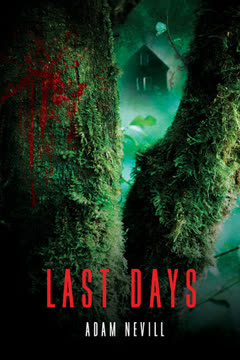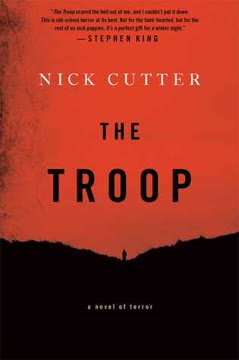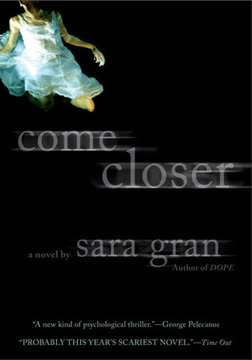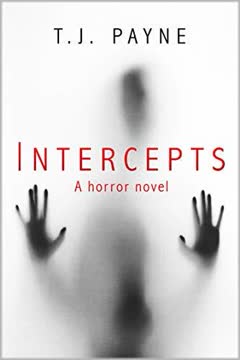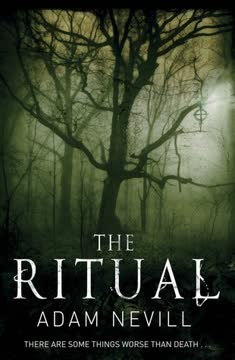Plot Summary
Shadows in the Hallway
The novel opens with a woman, haunted and hunted by supernatural "old friends", making a last, desperate stand in her rented home. She is a survivor of a notorious cult, The Temple of the Last Days, and has spent her life on the run, changing identities and homes, always pursued by the same relentless, otherworldly forces. The house is invaded by these presences, which manifest as physical and psychological horrors—scratching, thumping, and leaving behind inexplicable, ancient objects. In a final act of defiance and resignation, she takes her own life rather than let the darkness claim her, setting the tone for a story where the past is never truly dead, and the supernatural is inextricably linked to trauma and guilt.
The Cult's Dark Genesis
Kyle Freeman, a struggling documentary filmmaker, is hired by the enigmatic Max Solomon to make a film about The Temple of the Last Days, a cult infamous for its violent end in the Arizona desert in 1975. The cult's leader, Sister Katherine, is a British woman whose life is a patchwork of criminality, charisma, and spiritual manipulation. Max, who claims to have been involved in the cult's early days, offers Kyle a lucrative deal and unprecedented access to surviving members and locations. Kyle, desperate for money and meaning, is both skeptical and intrigued, sensing that the story is more than just true crime—it's a gateway to something darker and more inexplicable.
The Gathering's London Roots
The Temple began as The Last Gathering in London, a blend of apocalyptic Christianity, occultism, and countercultural therapy. Sister Katherine, once Hermione Tirrill, quickly seized control, transforming the group into a vehicle for her own power and spiritual ambitions. Early members, like Susan White (Sister Isis), describe a heady mix of communal living, renunciation of possessions, and intense psychological sessions designed to break down individuality. The group's practices grow increasingly authoritarian and abusive, with Katherine retreating into isolation and delegating control to her inner circle, The Seven. The seeds of paranoia, hierarchy, and spiritual exploitation are sown.
Renunciation and Control
Through interviews with survivors, the film crew uncovers the cult's methods: public confessions, enforced celibacy, sexual manipulation, and the systematic destruction of personal identity. Members are encouraged to sever all ties to the outside world, surrender their money, and submit to the will of Katherine and The Seven. Dissent is punished through exclusion, humiliation, and self-inflicted violence. The cult's London headquarters becomes a site of psychological and, eventually, physical torment, as the group prepares for a prophesied transformation—what Katherine calls "ascent."
Presences in the Walls
As the cult's practices intensify, members begin to report strange phenomena: presences in the house, inexplicable sounds, and shared visions of a mysterious refuge. These experiences are accompanied by physical manifestations—unexplained stains, foul odors, and the appearance of ancient, charred objects ("heavenly letters"). Survivors describe a growing sense of dread, as if the group has attracted or conjured something inhuman. The film crew, too, begins to experience these phenomena in the present day, suggesting that the cult's legacy is not just psychological but supernatural.
The French Schism
Driven by a collective vision, the cult relocates to a remote farm in Normandy, France. Ill-prepared for rural life, they endure starvation, disease, and increasing isolation. Katherine becomes more reclusive and despotic, and The Seven enforce her will with escalating cruelty. A schism erupts when some members rebel against her authority, leading to disappearances—adults and children vanish during a violent storm, never to be seen again. The survivors are left traumatized, and the group fractures, with the most loyal following Katherine to America.
Blood in the Desert
In the Arizona desert, the cult—now The Temple of the Last Days—occupies an abandoned copper mine. Katherine's teachings become more apocalyptic and her control more absolute. Children are separated from parents, and sexual and physical abuse become routine. The group is plagued by paranoia, drug use, and the belief that they are under siege by outside forces. The supernatural phenomena intensify: members report out-of-body experiences, shared visions of hellish landscapes, and the presence of "old friends"—entities that seem to feed on suffering and blood.
The Night of Ascent
The cult's story culminates in the infamous Night of Ascent. Police are called to the mine after reports of gunfire and strange lights. They find a scene of carnage: nine dead, including Katherine (beheaded), and five traumatized children. The survivors are mute or deeply disturbed. Evidence suggests a ritualistic mass murder-suicide, but the details are inexplicable—bite marks, missing blood, and the presence of ancient relics. The police and media attribute the violence to drugs and madness, but the testimonies of survivors hint at something far more sinister: a failed attempt at supernatural transformation, with the cult as both sacrifice and vessel.
Hauntings and Residues
As Kyle and his crew investigate the cult's history, they are drawn into a web of hauntings and physical manifestations. Former cult sites are plagued by inexplicable phenomena—sounds, smells, stains, and apparitions. Survivors are tormented by nightmares and visions, and some die under mysterious circumstances. The film crew themselves become targets, experiencing escalating supernatural attacks that mirror the cult's own descent. The boundaries between past and present, reality and nightmare, begin to blur.
Survivors and Testimonies
Kyle's interviews with survivors—Susan White, Brother Gabriel, Martha Lake, and others—reveal the deep psychological scars left by the cult. Many are isolated, addicted, or dead. Their stories are marked by guilt, complicity, and a sense of being forever marked by their experiences. They speak of Katherine's charisma and cruelty, the group's collective madness, and the inescapable sense that something was unleashed that cannot be put back. The testimonies are corroborated by physical evidence—artefacts, stains, and the recurring appearance of "heavenly letters."
The Film Crew's Descent
The film crew's journey mirrors the cult's own: what begins as a detached investigation becomes a personal ordeal. They are haunted by dreams, stalked by presences, and marked by the same supernatural phenomena that plagued the cult. One by one, they are picked off or driven mad. The project's original purpose—to document and expose—gives way to a desperate struggle for survival and understanding. The line between observer and participant is erased.
Manifestations and Madness
The supernatural elements escalate from suggestion to full manifestation. The Blood Friends—entities conjured by the cult's rituals—begin to physically intrude into the world, attacking and possessing the living. The film's evidence becomes undeniable: footage captures impossible events, and the crew is forced to confront the reality of what the cult unleashed. The narrative reveals that Sister Katherine's ultimate goal was not just power, but immortality through supernatural means—by transferring her consciousness into a child, aided by the Blood Friends.
The Kingdom of Fools
The story's climax is a revelation: the cult's rituals were not just delusions, but a reenactment of an ancient, recurring atrocity. Through a hidden triptych painting, Kyle learns of the Blood Friends' origins in a sixteenth-century French massacre, where a prophet named Lorche led his followers to destruction and damnation. The cult's fate is to be eternally devoured and mocked in a hellish "Kingdom of Fools," ruled by the Unholy Swine—a vision that haunts both the living and the dead. The cycle of abuse, power, and supernatural vengeance is shown to be endless.
The Final Confrontation
In a desperate bid to end the cycle, Kyle, Max, and a mercenary named Jed infiltrate the mansion of Chet Regal—a Hollywood star and the last vessel of Sister Katherine. The house is infested with the Blood Friends, and the trio must fight their way through supernatural horrors to reach Chet, who is in the process of transferring Katherine's consciousness into a new child. In a brutal, chaotic battle, Max and Jed are killed, and Kyle is left to confront the dying vessel and the child. He kills Chet/Katherine, but is left traumatized and uncertain if the cycle is truly broken.
The Price of Exposure
Kyle survives, but at a terrible cost. The evidence he has gathered is too horrific and unbelievable to be accepted by the authorities or the public. The survivors are dead, missing, or insane. The film, intended as an exposé, becomes a cursed object—too dangerous to show, too important to destroy. Kyle is left with the knowledge that the cycle may begin again, and that his own involvement has marked him forever. The story ends with a sense of ambiguity and dread: the past is never truly past, and the darkness unleashed by the cult continues to seek new vessels.
The Cycle Continues
The final chapter is a meditation on the persistence of evil, both human and supernatural. The Blood Friends, once conjured, cannot be banished—they linger in places of trauma, waiting for new hosts. The story of The Temple of the Last Days is revealed to be just one iteration of an ancient pattern: charismatic leaders, broken followers, and the unleashing of forces beyond comprehension. The film, and Kyle's own life, become warnings: some stories, once told, can never be untold, and some doors, once opened, can never be closed.
Characters
Kyle Freeman
Kyle is a documentary filmmaker whose desperation for meaning and financial survival draws him into the orbit of The Temple of the Last Days. Initially skeptical and detached, he is gradually consumed by the story he is investigating. His journey is both external (uncovering the cult's history) and internal (confronting his own fears, guilt, and complicity). Psychologically, Kyle is marked by a need for validation and a tendency to become obsessed with the stories he pursues. As the supernatural elements escalate, he becomes both a witness and a victim, ultimately forced to confront the limits of reason and the reality of evil. His development is a descent from observer to participant, from skeptic to believer, and finally to survivor—traumatized, isolated, and forever changed.
Maximillian Solomon
Max is the enigmatic executive producer who commissions Kyle's film. A former founding member of the cult, he is both a victim and a perpetrator—haunted by guilt, driven by self-preservation, and willing to use others to achieve his ends. Max is a master of rationalization, able to justify any action as necessary for the greater good or his own survival. His relationship with Kyle is fraught with manipulation, secrecy, and a shared sense of doom. Psychologically, Max embodies the dangers of charisma and the moral compromises of those who survive by any means. His ultimate fate is to be consumed by the very forces he sought to expose and control.
Sister Katherine (Hermione Tirrill)
Sister Katherine is the central figure of the cult—a woman whose life is a study in trauma, ambition, and spiritual hunger. She is both a product and a manipulator of her times, blending elements of Christianity, occultism, and self-help into a doctrine of absolute control. Psychologically, she is a malignant narcissist, capable of both charm and cruelty, and driven by a need for adoration and power. Her ultimate goal is not just leadership, but immortality—achieved through supernatural means and the sacrifice of her followers. Even in death, her influence endures, as she becomes the vessel for the Blood Friends and seeks reincarnation through new hosts.
Dan Harvey
Dan is Kyle's best friend and the film's cameraman. Practical, skeptical, and technically skilled, he serves as a grounding influence for Kyle. However, as the investigation deepens, Dan becomes increasingly unsettled and traumatized by the supernatural events. His skepticism is gradually eroded, and he is ultimately targeted by the same forces that haunt the cult's survivors. Dan's fate is a testament to the dangers of proximity to evil, and his relationship with Kyle is marked by loyalty, frustration, and shared trauma.
Susan White (Sister Isis)
Susan is one of the few surviving members of the cult's London phase. Eccentric, traumatized, and deeply marked by her experiences, she provides crucial testimony about the cult's early days. Her psychological state is fragile—oscillating between nostalgia, fear, and guilt. Susan's narrative reveals the seductive power of the cult and the lasting damage inflicted on its members. Her eventual death is both a release and a warning: some wounds never heal, and some stories are too dangerous to tell.
Brother Gabriel
Gabriel is another survivor of the cult's European phase, marked by anxiety, guilt, and a sense of being perpetually hunted. He is reluctant to share his full story, haunted by the presences he believes still pursue him. Gabriel's testimony is fragmented and evasive, reflecting both his trauma and his fear of retribution. His fate—mutilation and death—underscores the inescapability of the cult's legacy and the dangers of uncovering buried truths.
Martha Lake
Martha is the only adult survivor of the cult's final days in Arizona. Her life is a catalogue of loss, addiction, and regret. She is both a victim and a participant, complicit in the cult's abuses and haunted by the knowledge of what was unleashed. Martha's testimony is raw, emotional, and deeply affecting—she is a woman who has lost everything but the truth. Her eventual murder by supernatural forces is the final silencing of the cult's living memory.
Jed
Jed is the hired gun brought in for the final assault on Chet Regal's mansion. He is pragmatic, ruthless, and largely indifferent to the moral complexities of the situation. Jed represents the limits of violence as a solution—his skills are ultimately no match for the supernatural forces at play. His fate is to be consumed, both literally and figuratively, by the evil he is enlisted to fight.
Chet Regal
Chet is a Hollywood star and the final vessel for Sister Katherine's consciousness. Raised in privilege but marked by addiction, violence, and scandal, he is both a victim and an embodiment of the cult's legacy. Psychologically, Chet is a cipher—his identity is subsumed by Katherine's will, and his life is a reenactment of her ambitions and cruelties. His death is both an exorcism and a warning: evil, once unleashed, seeks new hosts.
The Blood Friends
The Blood Friends are the true antagonists of the story—entities conjured by the cult's rituals, feeding on suffering, blood, and the destruction of innocence. They are both a metaphor for and a literal manifestation of the cycle of abuse, power, and spiritual corruption. Their presence is marked by physical and psychological phenomena—stains, smells, dreams, and possessions. They are eternal, adaptable, and always seeking new openings into the world.
Plot Devices
Documentary Structure and Found Footage
The novel is structured as a documentary investigation, with Kyle and his crew serving as both narrators and participants. This device allows for a blending of past and present, testimony and experience, and creates a sense of immediacy and authenticity. The use of interviews, location shoots, and found footage blurs the line between reality and fiction, drawing the reader into the story's escalating horrors. The structure also serves as a commentary on the dangers of exposure—some stories, once uncovered, cannot be contained.
Foreshadowing and Recurrence
The narrative is rich with foreshadowing: dreams, visions, and shared experiences hint at the cycle of violence and supernatural intrusion that defines the cult's history. The recurrence of motifs—stains, "heavenly letters," presences, and the Kingdom of Fools—reinforces the idea that the past is never truly past. The story's structure mirrors the cult's own descent, suggesting that some patterns are inescapable and that evil, once unleashed, will always seek new forms.
Unreliable Testimony and Fragmented Truth
The novel relies on the testimonies of survivors, each marked by trauma, guilt, and the passage of time. Their stories are fragmented, contradictory, and often unreliable—reflecting both the psychological damage inflicted by the cult and the impossibility of fully understanding what happened. This device creates a sense of ambiguity and dread, as the reader is forced to piece together the truth from incomplete and often disturbing evidence.
Supernatural Manifestation as Psychological Metaphor
The supernatural elements of the story—presences, stains, possessions—function both as literal horrors and as metaphors for the lasting impact of trauma, abuse, and complicity. The boundaries between psychological and supernatural are deliberately blurred, suggesting that some wounds are so deep they become real, and that evil, once internalized, can never be fully exorcised.
The Unreliable Narrator and Meta-Narrative
Kyle's role as narrator and filmmaker creates a meta-narrative: the act of documenting, exposing, and interpreting becomes both a means of understanding and a source of danger. The story questions the ethics of investigation, the limits of reason, and the price of bearing witness. The film, intended as a tool of truth, becomes a cursed object—too dangerous to show, too important to destroy.
Analysis
Last Days is a modern horror novel that explores the intersection of cult psychology, supernatural evil, and the dangers of bearing witness. Through its documentary structure and layered testimonies, the book interrogates the nature of charisma, the cycle of abuse, and the persistence of trauma—both personal and collective. The cult at its center is both a product of its time and a timeless pattern: a charismatic leader, broken followers, and the unleashing of forces beyond comprehension. The supernatural elements serve as both literal horrors and metaphors for the inescapability of the past; the Blood Friends are the embodiment of evil that adapts, survives, and seeks new hosts. The novel is also a meditation on the ethics of storytelling—what it means to expose, to investigate, and to become implicated in the stories we tell. Ultimately, Last Days is a warning: some doors, once opened, can never be closed, and some stories, once told, can never be untold. The cycle of evil, once set in motion, endures—waiting for the next opening, the next witness, the next victim.
Last updated:
FAQ
Synopsis & Basic Details
What is Last Days about?
- A Filmmaker's Descent: Last Days follows Kyle Freeman, a struggling documentary filmmaker, hired by the enigmatic Max Solomon to investigate The Temple of the Last Days, a notorious 1970s cult. Kyle's journey takes him from the cult's London origins to its violent end in the Arizona desert, uncovering a history of manipulation, abuse, and supernatural phenomena.
- Unearthing a Cursed Legacy: The film crew interviews traumatized survivors and visits derelict cult sites, gradually realizing that the cult's dark legacy is not merely psychological but involves malevolent entities known as "Blood Friends". These entities manifest as physical and psychological horrors, blurring the lines between past and present, reality and nightmare.
- Confronting Ancient Evil: The investigation culminates in a desperate confrontation at the mansion of Chet Regal, a Hollywood actor believed to be the reincarnation of the cult's leader, Sister Katherine. Kyle must fight to survive and expose the truth, even as he and his crew become targets of the very forces they sought to document.
Why should I read Last Days?
- Deep Psychological Horror: Readers seeking a horror novel that delves into the psychological toll of cults and the insidious nature of manipulation will find Last Days profoundly unsettling. It explores how charisma can warp minds and how trauma can manifest in terrifying, tangible ways.
- Unique Found Footage Narrative: The book employs a compelling documentary-style narrative, blending interviews, location descriptions, and the protagonist's personal video diaries. This Last Days narrative choice creates an immersive, authentic, and increasingly claustrophobic reading experience, blurring the lines between fiction and reality.
- Rich, Layered Mystery: Beyond the surface-level cult story, Last Days unravels a complex, centuries-old mystery involving ancient evil, reincarnation, and a recurring cycle of human depravity. It offers a fresh perspective on supernatural horror, connecting modern cults to historical atrocities and exploring the enduring nature of evil.
What is the background of Last Days?
- Cults of the 1960s and 70s: The novel is deeply rooted in the cultural anxieties and phenomena of 1960s and 70s cults, drawing inspiration from real-life groups like the Manson Family and the People's Temple. Author Adam L.G. Nevill acknowledges Helter Skelter and Love Sex Fear Death: The Inside Story of the Process Church of the Final Judgement as key inspirations, providing a chillingly authentic backdrop for the fictional Temple of the Last Days.
- Guerrilla Filmmaking Aesthetic: The narrative is heavily influenced by the "found footage" horror genre, with Nevill citing films like REC, The Blair Witch Project, and Paranormal Activity. This Last Days stylistic choice informs Kyle's approach to documentary making, emphasizing raw, unpolished footage and the escalating terror of unseen forces.
- Historical and Occult Allusions: The story weaves in historical references to figures like John Dee and Aleister Crowley, and alludes to occult practices and spiritualist movements of the Victorian era. This intertextual richness grounds the supernatural elements in a broader history of human fascination with the unknown, enhancing the Last Days themes of ancient evil and recurring patterns.
What are the most memorable quotes in Last Days?
- "I have watched her sometimes away off in the open country, creeping as fast as a cloud shadow in a high wind.": This opening quote from Charlotte Perkins Gilman's The Yellow Wallpaper immediately sets a tone of creeping dread and psychological unraveling, foreshadowing the pervasive, elusive horror that stalks the characters in Last Days. It hints at the unseen, yet ever-present, malevolence.
- "Even now. Even now. She can.": Max Solomon utters this cryptic line after learning of Gabriel's horrific injury, revealing his deep-seated fear and the enduring power of Sister Katherine. This Last Days quote underscores the terrifying idea that Katherine's influence transcends death, suggesting a supernatural agency behind the unfolding tragedies.
- "They want Max. Fink about it. He started it. What they want wiv us? I ain't even making the film no more. Nor is you. You can't. You walk away now. An' if we help 'em out, like . . . We give Max to 'em. Eh? Eh? Fink about it. He got us into this. He lied to us. So we give 'em Max. That's who they want. Gotta be.": Malcolm Gonal's desperate, paranoid rant encapsulates the film crew's terrifying realization of their expendability and Max's manipulative role. This Last Days quote highlights the theme of betrayal and the desperate measures characters consider for survival against an incomprehensible threat.
What writing style, narrative choices, and literary techniques does Adam L.G. Nevill use?
- Immersive First-Person Perspective: Nevill primarily employs a first-person narrative through Kyle Freeman's perspective, often presented as internal monologue, video diary entries, and script notes. This Last Days narrative choice plunges the reader directly into Kyle's escalating fear and confusion, making his psychological descent deeply personal and visceral.
- Sensory Overload and Disorientation: The author masterfully uses vivid, often grotesque, sensory details—foul odors, unsettling sounds, and distorted visuals—to create a pervasive atmosphere of dread and disorientation. This technique, particularly evident in descriptions of the "Blood Friends" and haunted locations, blurs the line between hallucination and reality, enhancing the Last Days horror.
- Layered Intertextuality and Metafiction: Nevill integrates fictional historical documents, academic theories, and references to real-world cults and horror films within the narrative. This Last Days literary technique creates a rich metafictional layer, questioning the nature of truth and storytelling itself, while grounding the supernatural elements in a believable, albeit terrifying, context.
Hidden Details & Subtle Connections
What are some minor details that add significant meaning?
- The Cat's Behavior: Kyle's cat, initially a comforting presence, becomes increasingly agitated and fearful, scratching at doors and exhibiting distress. This subtle detail foreshadows the escalating supernatural intrusions into Kyle's flat, indicating that animals, with their heightened senses, perceive the "Blood Friends" before humans do, reinforcing the primal nature of the threat in Last Days.
- Max's "Dawn-Light Simulators": Max Solomon's obsession with full-spectrum lights, installed throughout his apartment and gifted to Kyle and Dan, initially seems like an eccentric quirk. However, it's later revealed that these lights actively repel the "Blood Friends", causing their manifestations to fade. This detail subtly hints at Max's deeper knowledge and his desperate, albeit flawed, attempts at self-preservation against the entities in Last Days.
- The "Heavenly Letters": The recurring appearance of ancient, charred objects like the child's shoe and the black bones, dismissed by police as cult paraphernalia, are called "heavenly letters" by Katherine and "mana" by Belial. Martha Lake's later revelation that these are left behind by the "Blood Friends" as they manifest, and Gonal's discovery of a finger bone, connects these seemingly minor details to the physical intrusion of the entities, deepening the Last Days symbolism of their presence.
What are some subtle foreshadowing and callbacks?
- Conway's "Dogs in the Sky": Lieutenant Conway's recollection of hearing dogs "in the sky, but moving away" during the Night of Ascent, initially dismissed as desert tricks, is a subtle callback to Brother Abraham's letter mentioning "the rain of black bones" and people going "up, you know? Just up." This foreshadows the "Blood Friends'" ability to manipulate perception and their eventual ascension into the "Kingdom of Fools" in Last Days.
- Max's "Self-Serious" Demeanor: From their first meeting, Kyle notes Max's "self-seriousness" and "grudging respect" for Katherine, hinting at a deeper, more personal connection than initially disclosed. This subtly foreshadows Max's eventual confession of being a co-founder of The Last Gathering, revealing his long-standing, complex relationship with the cult and its dark legacy in Last Days.
- The Recurring Smell of Decay: The "ghastly" smell of sewage, carrion, and damp clothes is consistently noted by Rachel Phillips, Kyle, and Martha Lake at various haunted locations. This recurring sensory detail subtly foreshadows the physical manifestation of the "Blood Friends", whose presence is intrinsically linked to decomposition and the unnatural, creating a pervasive sense of dread throughout Last Days.
What are some unexpected character connections?
- Max Solomon's Founding Role: The revelation that Max Solomon was a co-founder of The Last Gathering with Brother Heron, and not just an "interested party," is a significant and unexpected connection. This Maximillian Solomon motivation explains his deep knowledge, his access to survivors, and his desperate drive to make the film, transforming him from a detached executive into a deeply implicated, manipulative survivor in Last Days.
- Chet Regal as Sister Katherine's Reincarnation: The shocking twist that Hollywood actor Chet Regal is the reincarnation of Sister Katherine, having transferred her consciousness into Prissie's son, is a profound and unexpected connection. This Sister Katherine explained detail recontextualizes Chet's entire life and the cult's legacy, revealing Katherine's ultimate ambition for immortality and her continued influence in Last Days.
- Malcolm Gonal's Prior Involvement: Kyle's discovery that Malcolm Gonal, a discredited TV director, was Max's first choice for the documentary, and that Gonal also experienced supernatural attacks, creates an unexpected parallel. This Malcolm Gonal analysis highlights Max's manipulative nature and the expendability of his chosen filmmakers, connecting Kyle's fate to a pattern of victims in Last Days.
Who are the most significant supporting characters?
- Rachel Phillips QC: As a former tenant of the Clarendon Road house, Rachel Phillips provides crucial, credible corroboration of the supernatural phenomena experienced by Kyle and Dan. Her professional background as a barrister lends weight to her testimony, making her a vital, albeit brief, supporting character who validates the inexplicable events in Last Days.
- Dr. Pieter Gemeen: The eccentric Renaissance historian in Antwerp serves as a pivotal expositor, revealing the ancient origins of the "Blood Friends" and their connection to Konrad Lorche and the 1566 St. Mayenne massacre. His academic authority and the historical context he provides are essential for Kyle (and the reader) to grasp the true, terrifying scope of the evil in Last Days.
- Jed: Max's hired mercenary, Jed, initially appears as a pragmatic, ruthless instrument of violence. However, his unwavering, almost fanatical, belief in fighting "demons" and his "special forces" approach to the supernatural provide a stark contrast to Kyle's skepticism, highlighting the different ways characters cope with the incomprehensible in Last Days.
Psychological, Emotional, & Relational Analysis
What are some unspoken motivations of the characters?
- Kyle's Desperation for Validation: Beneath Kyle's artistic integrity and desire to tell an honest story lies a deep, unspoken motivation: a desperate need for professional validation and financial solvency. His mounting debts and past failures drive him to accept Max's offer, even as he senses danger, making him susceptible to manipulation and pushing him to continue filming despite escalating horrors. This Kyle Freeman motivation fuels his relentless pursuit of the story.
- Max's Guilt and Self-Preservation: Max Solomon's primary unspoken motivation is a complex blend of profound guilt over his role in founding The Last Gathering and a desperate drive for self-preservation. He seeks to "correct a very grave mistake" and "flush Katherine out," but his methods are self-serving, using others as "bait" to gather evidence and protect himself from the "Blood Friends" he inadvertently unleashed. This Maximillian Solomon analysis reveals his moral compromises.
- Martha Lake's Need for Absolution: Martha Lake's willingness to speak after decades of silence, despite her trauma, is driven by an unspoken need for absolution and to "set the record straight" for her father and herself. Her raw grief and confession of complicity reveal a desire to unburden her soul and warn others, even as she acknowledges the inescapable nature of the cult's legacy. This Martha Lake motivations highlights her tragic heroism.
What psychological complexities do the characters exhibit?
- Kyle's Obsessive Compulsion: Kyle exhibits a profound psychological complexity rooted in obsessive compulsion. His dedication to filmmaking borders on addiction, leading him to prioritize the "story" above his own safety, relationships, and mental well-being. This Kyle Freeman psychological analysis manifests as a relentless pursuit of truth, even as it drives him to the brink of madness and moral compromise, mirroring the cult's own destructive obsessions.
- Max's Narcissistic Rationalization: Max Solomon displays a complex form of narcissistic rationalization. He acknowledges his past mistakes and the harm he caused but consistently frames his current manipulative actions as necessary for a "greater good" or as a "counter-attack" against evil. This Maximillian Solomon psychological analysis allows him to maintain a veneer of morality while exploiting others, showcasing the insidious nature of self-deception.
- The Survivors' Collective Trauma and Alienation: Characters like Susan White, Brother Gabriel, and Martha Lake exhibit deep psychological complexities stemming from collective trauma and profound alienation. They are "misfits and outcasts," unable to fully reintegrate into society, haunted by memories, and susceptible to the lingering influence of the "Blood Friends". Their eccentricities, paranoia, and fragmented testimonies are direct manifestations of the cult's psychological damage, highlighting the lasting impact of such experiences in Last Days.
What are the major emotional turning points?
- The Clarendon Road Intrusion: The first major emotional turning point occurs when Kyle and Dan experience the supernatural intrusion at the Clarendon Road house. Their initial skepticism gives way to genuine terror and disbelief, marking the moment the film transitions from a true-crime investigation to a terrifying encounter with the paranormal. This Last Days emotional analysis shatters their detached observer status.
- Gabriel's Mutilation and Susan's Death: The news of Brother Gabriel losing his leg in a trap and Susan White's sudden death by "stroke" (later revealed to be a supernatural attack) serves as a critical emotional turning point. These events force Kyle and Dan to confront the very real, physical danger of their investigation, deepening their fear and raising questions about Max's true intentions. This Last Days plot point escalates the stakes dramatically.
- Martha Lake's Confession and Murder: Martha Lake's raw, tearful confession of complicity and her subsequent murder by the "Blood Friends" is a powerful emotional turning point. Her testimony humanizes the cult's victims and survivors, while her death confirms the relentless, personal nature of the supernatural threat, solidifying Kyle's belief and resolve to act. This Martha Lake analysis provides a tragic climax to the survivor interviews.
How do relationship dynamics evolve?
- Kyle and Dan: From Partnership to Betrayal (and Back): The relationship between Kyle and Dan evolves from a loyal, albeit sometimes exasperated, partnership into one strained by fear and perceived betrayal. Dan's initial skepticism and eventual terror lead him to question Kyle's judgment and the project's safety, culminating in a temporary rift. However, Dan's survival and subsequent message of "he believes you now" hint at a renewed, deeper bond forged through shared trauma, highlighting the resilience of their friendship in Last Days.
- Kyle and Max: From Professionalism to Hostility: Kyle's relationship with Max Solomon rapidly devolves from a professional, if wary, collaboration into open hostility and distrust. Max's manipulative omissions, his willingness to use Kyle as "bait," and his cold indifference to the suffering of others erode any respect Kyle initially held. This Kyle Freeman relationship analysis culminates in Kyle's rage and his desperate attempt to expose Max, revealing the corrupting influence of power and self-interest.
- The Cult Members: From Communal Idealism to Paranoia and Abuse: The relationship dynamics within The Last Gathering/Temple of the Last Days evolve from an initial idealism of communal living and shared purpose to a brutal hierarchy built on paranoia, fear, and systematic abuse. Katherine's manipulation severs bonds, enforces celibacy, and encourages denunciation, transforming followers into instruments of her will. This themes in Last Days exploration shows how a desire for belonging can be twisted into a mechanism of control and destruction.
Interpretation & Debate
Which parts of the story remain ambiguous or open-ended?
- The Nature of the "Blood Friends": While the "Blood Friends" are clearly malevolent entities, their exact nature and origins remain somewhat ambiguous. Are they literal demons, ancient spirits, or a manifestation of collective human evil and trauma? The story suggests they are both, leaving readers to debate the precise metaphysical reality of these entities and their connection to human pathology in Last Days.
- The Extent of Katherine's Consciousness Transfer: The narrative strongly implies Sister Katherine successfully transferred her consciousness into Chet Regal, and intends to do so again into an adopted child. However, the exact mechanism and the fate of the original child's consciousness remain open to interpretation. Was Chet's original self completely subsumed, or did a hybrid entity emerge? This Sister Katherine explained aspect invites debate on the nature of identity and possession.
- The Efficacy of Kyle's Actions: Kyle's final act of killing Chet/Katherine and uploading the film is presented as a desperate attempt to break the cycle and expose the truth. However, the story leaves open whether this act truly ends the threat or merely postpones it, or even exacerbates it. The "Blood Friends" are ancient and persistent, suggesting that individual actions may be insufficient to stop such a deep-seated evil, leaving the Last Days ending explained with a lingering sense of dread.
What are some debatable, controversial scenes or moments in Last Days?
- The "Unholy Swine" and Cannibalism: The depiction of Konrad Lorche's "Unholy Swine" (a pig appointed as Bishop) and the implied cannibalism among his starving followers in St. Mayenne is a deeply controversial and disturbing moment. This Last Days symbolism of consuming the dead, and the pig's grotesque elevation, challenges religious sensibilities and pushes the boundaries of horror, forcing readers to confront extreme depravity.
- Jed's Torture of Kyle: Jed's physical assault and psychological intimidation of Kyle in the motel room, bending his thumb and pressing his solar plexus, is a controversial scene. It highlights the moral ambiguity of the "heroes" and the brutalization Kyle undergoes, blurring the line between necessary coercion and gratuitous violence, sparking debate on the ethics of survival in Last Days.
- The "Dog-Children": The revelation that two of the children rescued from the mine, Sardis and Papius, now behave like dogs, living on all fours and unable to speak, is a profoundly controversial and tragic moment. This Last Days themes of child abuse and the destruction of innocence, combined with the supernatural element of partial possession, is deeply unsettling and raises questions about the ultimate cost of Katherine's rituals.
Last Days Ending Explained: How It Ends & What It Means
- The Final Confrontation and Katherine's Demise: The story culminates with Kyle, Max, and Jed infiltrating Chet Regal's mansion, which is infested with "Blood Friends". Max and Jed are killed by the entities, leaving Kyle to confront Chet Regal, who is revealed to be Sister Katherine's consciousness inhabiting Chet's body, attempting to transfer into an adopted child. Kyle shoots Chet/Katherine repeatedly, emptying his gun into the dying vessel, seemingly ending Katherine's physical presence and her cycle of reincarnation.
- The Film's Release and Kyle's Fate: Believing he has broken the cycle and avenged his friends, Kyle uploads his rough-cut documentary, including his final, unscripted narration, to Finger Mouse for immediate online release. He anticipates arrest and imprisonment but hopes the film will serve as proof of the impossible events. However, no authorities arrive, leaving Kyle in a state of bewildered freedom, haunted by his experiences and the knowledge of what he has done.
- Meaning: The Persistence of Evil and the Price of Knowledge: The ending of Last Days is ambiguous, suggesting that while Katherine's immediate threat is neutralized, the "Blood Friends" and the cycle of evil may not be truly vanquished. Kyle's survival, coupled with the lack of official recognition for his story, implies that some truths are too horrific or unbelievable for the world to accept. The film becomes a cursed artifact, a testament to a reality beyond human comprehension, leaving Kyle forever marked by his involvement and questioning the true cost of his "masterpiece." The Last Days ending explained leaves readers with a chilling sense that evil endures, waiting for its next opportunity.
Review Summary
Last Days receives mostly positive reviews, with readers praising its creepy atmosphere, well-developed characters, and intense horror elements. Many found the cult storyline intriguing and the supernatural aspects genuinely frightening. Some criticized the pacing in the latter half and felt it dragged on too long. The documentary-style narrative and Nevill's vivid prose were frequently highlighted as strengths. While some readers found it too intense or verbose, most horror fans considered it a compelling and terrifying read.
Similar Books
Download PDF
Download EPUB
.epub digital book format is ideal for reading ebooks on phones, tablets, and e-readers.
